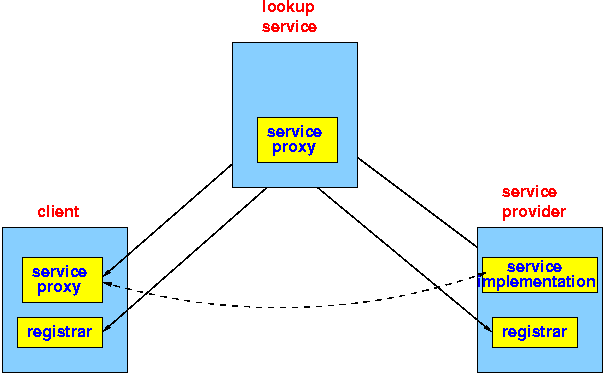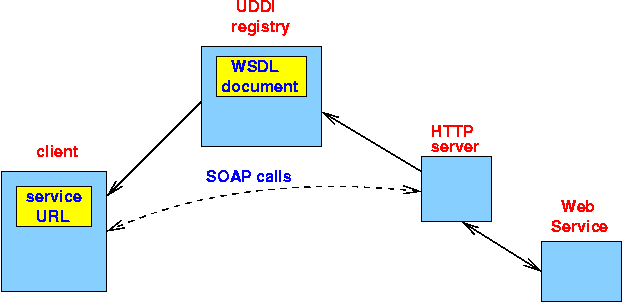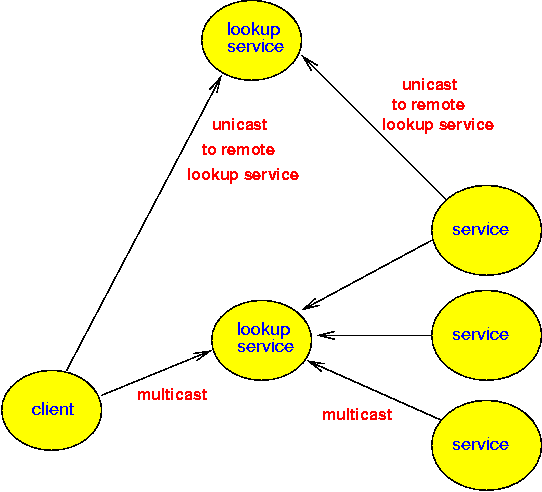- Distributed systems are commonplace now, with the Web and email common examples
-
Distributed systems normally consist of computing nodes linked
by middleware

| The Web |
|
|
| Distributed Systems |
|
|
| Old middleware |
|
|
| New middleware |
|
There are a number of middleware systems that have appeared recently, such as
|
| Scope |
|
This talk looks at a number of the newer protocols, and examines them for issues such as
|
| Jini |
|
|
| Jini structure |

| Web Services |
|
|
| Web Service Structure |

| JXTA |
|
|
| JXTA Service Structure |

| Lookup versus Discovery |
|
|
| Discovery |
|
|
| Network implications |
|
|
| Directories |

| What's in a directory |

| Search Semantics |
|
Service representation:
|
| Service Invocation |
|
|
| Jini - scope |
|
|
| Jini directory discovery |
|
|
| Jini lookup discovery |

| Jini service discovery |
|
|
| Jini service invocation |
|
|
| Jini network implications |
|
|
| Jini network implications |
|
|
| Web Services - scope |
|
|
| Web services - technologies |
|
|
| SOAP |
|
|
| SOAP |
|
Here is what SOAP isn't:
|
| WSDL |
|
|
| Web services - now |
|
The current state of this RPC mechanism is
|
| Web services - directory discovery |
|
|
| Web service discovery |
|
Each UDDI server contains a registry that can be searched for
|
| Web service discovery |
|
Each UDDI server contains a registry that can be searched for
|
| Web service invocation |
|
The WSDL description of a service is an XML document that includes
|
| Web service network implications |
|
|
| JXTA - scope |
|
|
| JXTA concepts |
|
|
| JXTA concepts |
|
|
| JXTA peer discovery |
|
Peer discovery can be done in a variety of ways:
|
| JXTA Service discovery |
|
|
| JXTA Service discovery |
|
Searching involves
|
| Service invocation |
|
|
| Network implications |
|
|
| Data representation (what is moved) |
|
|
| Transport (how it is moved) |
|
| Service description |
|
|
| Locating services |
|
|
| Lookup matching |
|
|
| Language bindings |
|
|
| Language paradigm |
|
|
| Remote reference |
|
|
| Synchronicity |
|
Some middleware systems support event mechanisms for asynchronous processing, some only support synchronous processing
|
| Garbage collection |
|
Some systems will garbage collect objects/services and clean up registries. Others won't.
|
| Conclusion |
|
|
| URLs |
|
|